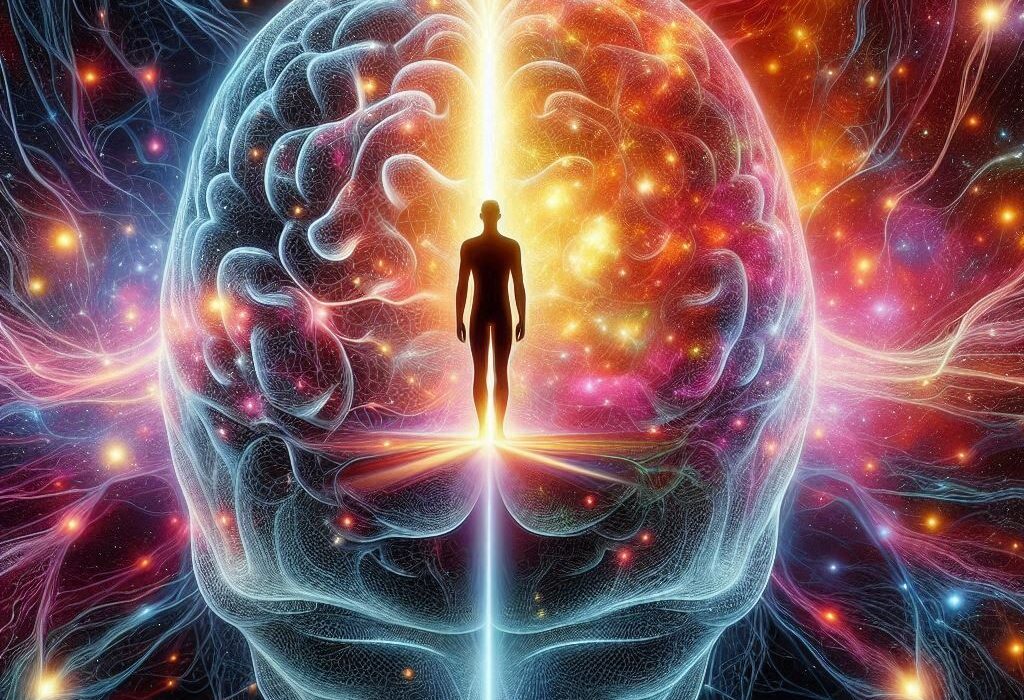Memory defines who we are. It is the foundation of learning, identity, and consciousness—the mental bridge that connects our past experiences with present understanding and future decisions. Without memory, life would be a collection of disconnected moments, each fading as soon as it occurred. Yet memory is also one of the most puzzling and fallible functions of the human brain. We forget names, misplace keys, or struggle to recall details from yesterday while remembering a childhood event vividly.
The mysteries of memory have fascinated philosophers, psychologists, and neuroscientists for centuries. From ancient theories of the “mind’s wax tablet” to modern brain imaging, scientists have sought to understand how memories are formed, stored, and retrieved—and why we sometimes forget. Memory is not a single process but a complex network of systems that encode, organize, and reconstruct experiences. And forgetting, far from being a flaw, may actually be essential for healthy brain function.
In this exploration of memory, we will delve into the science of how memories are made and lost, the different types of memory, the biological foundations that support them, the psychological factors that shape recall, and evidence-based ways to improve memory performance.
What Is Memory?
Memory can be defined as the process by which information is encoded, stored, and retrieved by the brain. It allows us to retain knowledge, adapt to changing environments, and form relationships. Memory is not a static archive but a dynamic and reconstructive process. Each time we recall something, we subtly reshape it, influenced by current emotions, context, and perception.
Modern neuroscience describes memory as a network of neural connections distributed across various regions of the brain. The hippocampus, located deep within the temporal lobe, plays a critical role in forming new memories, while other regions such as the prefrontal cortex, amygdala, and cerebellum contribute to organization, emotion, and procedural skills.
Memory operates at different timescales and levels of consciousness. Some memories are fleeting, lasting only seconds, while others endure for decades. This diversity is reflected in the classification of memory types, each serving distinct but interconnected purposes.
The Types of Memory
Scientists generally categorize memory into three broad stages: sensory memory, short-term (or working) memory, and long-term memory. These stages are not separate storage areas but functional phases of information processing.
Sensory memory is the briefest form, lasting only milliseconds to a few seconds. It captures incoming sensory information—sights, sounds, smells—just long enough for the brain to decide whether to pay attention. For example, when you glance at a scene and then close your eyes, the lingering image for a split second is sensory memory at work.
Short-term memory, often used interchangeably with working memory, holds information temporarily while we process it. It allows you to remember a phone number long enough to dial it or to hold several ideas in mind while solving a problem. Working memory involves active manipulation of data and depends heavily on the prefrontal cortex.
Long-term memory refers to information stored for extended periods—from hours to a lifetime. It is subdivided into explicit (conscious) and implicit (unconscious) memory.
Explicit memory includes episodic memory (personal experiences) and semantic memory (facts and knowledge). Episodic memory allows you to recall your first day of school, while semantic memory lets you remember that Paris is the capital of France.
Implicit memory involves skills and habits, often called procedural memory, such as riding a bicycle or typing on a keyboard. It also includes emotional conditioning—responses learned through association.
Each type of memory relies on different brain circuits and neurotransmitters, forming an intricate system of cooperation between regions.
How Memory Is Formed
The creation of memory involves three key processes: encoding, storage, and retrieval.
Encoding is the process of transforming sensory input into a neural representation. When you experience something new, your brain converts sights, sounds, and emotions into electrical and chemical signals. Attention plays a crucial role here; we remember what we focus on. Events that are emotionally charged or personally meaningful are encoded more strongly, thanks to the amygdala’s interaction with the hippocampus.
Storage refers to maintaining information over time. During this phase, the brain strengthens the neural connections that were activated during encoding—a process known as consolidation. Research shows that consolidation continues during sleep, when the hippocampus “replays” experiences to transfer them into long-term storage.
Retrieval is the act of bringing stored information back into awareness. This process can be influenced by cues, context, and emotions. When retrieval fails, we experience forgetting—not necessarily because the memory is gone, but because the brain cannot access it efficiently.
Memory formation is therefore not like saving a file on a computer; it is more like growing a network of interconnected pathways that must be maintained and strengthened through use and repetition.
Why We Forget
Forgetting is an inevitable part of memory. It may seem frustrating, but it serves important cognitive and adaptive functions. The brain’s capacity is vast, yet it prioritizes efficiency by discarding unnecessary or outdated information. Without forgetting, our mental world would be cluttered with irrelevant details, making it harder to focus on what matters.
Several mechanisms contribute to forgetting.
One of the earliest explanations came from Hermann Ebbinghaus in the late 19th century, who measured how quickly memory fades over time. His forgetting curve showed that we lose information rapidly at first, followed by a slower rate of decline. However, forgetting is not simply a matter of “decay” over time—it involves complex neural and psychological processes.
One major factor is interference. When similar memories overlap, they compete for retrieval. Proactive interference occurs when old memories hinder the recall of new ones, while retroactive interference happens when new learning disrupts older memories. For instance, learning a new password may make it harder to remember the old one.
Another explanation is retrieval failure. Sometimes the memory is stored but cannot be accessed due to weak or missing cues. A familiar example is the “tip-of-the-tongue” phenomenon, where you know you know something but can’t recall it immediately.
Forgetting can also result from motivated forgetting, where the brain suppresses painful or traumatic memories as a defense mechanism. Sigmund Freud first proposed this concept as repression, and modern neuroscience has found that emotional regulation can indeed inhibit retrieval through prefrontal control over the hippocampus.
At the biological level, forgetting may involve the weakening or removal of synaptic connections. Synaptic pruning—a process in which the brain eliminates less-used connections—helps refine neural networks and improve efficiency. This means forgetting is not merely loss, but an active form of learning that keeps the brain flexible.
The Biology of Memory
The biological foundation of memory lies in the communication between neurons, the brain’s nerve cells. Neurons transmit signals through synapses, where chemical messengers called neurotransmitters bridge the gap between cells. When we learn something new, certain synapses become more efficient at transmitting signals, a process known as synaptic plasticity.
One of the most studied forms of synaptic plasticity is long-term potentiation (LTP). In LTP, repeated activation of a neural pathway strengthens the connections between neurons, making future communication easier. This strengthening is thought to be a cellular basis for learning and memory.
The hippocampus is central to memory formation, particularly for explicit memories. Damage to this region, as seen in famous neurological cases like patient H.M., results in severe anterograde amnesia—the inability to form new long-term memories. However, older memories and procedural skills often remain intact, indicating that different memory systems are distributed throughout the brain.
The amygdala assigns emotional value to memories, enhancing their strength and vividness. That is why emotionally charged events—such as a wedding day or a car accident—are remembered more clearly than neutral ones. The prefrontal cortex, meanwhile, organizes and retrieves memories, helping us decide what to recall and when.
Sleep, hormones, and neurotransmitters also play crucial roles. Sleep, especially deep and REM stages, consolidates memory by reactivating neural patterns from the day. Neurotransmitters like acetylcholine, dopamine, and glutamate facilitate learning and plasticity, while stress hormones such as cortisol can either enhance or impair memory depending on their levels and timing.
The Role of Emotions in Memory
Emotion and memory are deeply intertwined. Emotional arousal influences how memories are encoded, stored, and retrieved. The amygdala’s close connection to the hippocampus means that emotional events are prioritized for storage, ensuring that we remember experiences relevant to survival.
Positive emotions can improve memory formation by stimulating dopamine release, which enhances synaptic plasticity. Conversely, intense negative emotions can either strengthen or disrupt memory, depending on context. Moderate stress can improve focus and recall, but chronic stress or trauma can impair hippocampal function and lead to memory deficits.
Studies on “flashbulb memories”—vivid recollections of shocking events, such as where one was during a major disaster—show how emotion can create long-lasting impressions. Yet research also reveals that these memories are not always accurate; while people feel confident in their details, the memories often change over time. This demonstrates that even emotionally powerful memories are subject to reconstruction and distortion.
The Reconstruction of Memory
Contrary to popular belief, memory is not a faithful recording of the past. It is a reconstruction shaped by attention, interpretation, and context. Each act of recall is like rebuilding a puzzle from fragments, influenced by our current beliefs, expectations, and emotions.
Psychologist Elizabeth Loftus demonstrated how easily memory can be distorted through suggestion. In her experiments, participants’ recollections of car accidents changed depending on the wording of questions—such as whether cars “hit” or “smashed” each other. Some even remembered details that never occurred.
This reconstructive nature of memory explains why eyewitness testimonies can be unreliable and why our personal narratives evolve. Memories are constantly updated to fit our understanding of ourselves and the world. While this flexibility can lead to errors, it also allows for adaptation and creativity.
Memory Decline and Disorders
Memory naturally changes over the lifespan. Children have extraordinary learning capacity, but as we age, certain aspects of memory—especially working memory and episodic recall—decline. This is due to a combination of neural aging, reduced plasticity, and slower information processing. However, not all types of memory deteriorate equally; semantic knowledge and procedural skills often remain stable or even improve with experience.
Pathological memory loss, however, goes beyond normal aging. Conditions such as Alzheimer’s disease, other dementias, and brain injuries can severely disrupt memory systems. Alzheimer’s disease, for instance, is marked by the buildup of amyloid plaques and tau tangles that damage neurons, particularly in the hippocampus and cortex. The result is progressive loss of both recent and long-term memories, eventually eroding identity and function.
Other disorders, like amnesia, can result from trauma, infection, or oxygen deprivation. In retrograde amnesia, individuals lose memories from before the injury, while anterograde amnesia prevents new memories from forming. These conditions highlight the delicate balance of neural systems that sustain memory.
Improving Memory: The Science of Remembering Better
Although forgetting is natural, research shows that memory can be improved through practice, strategy, and lifestyle. The brain is remarkably plastic, capable of growing new connections throughout life. Strengthening memory requires both mental and physical care.
One of the most effective ways to improve memory is active engagement. Learning that involves understanding, association, and application—rather than rote repetition—creates stronger neural networks. Techniques like elaboration (linking new information to existing knowledge) and visualization (creating mental imagery) enhance encoding and retrieval.
Repetition spaced over time, known as spaced practice, has been shown to improve retention far more effectively than cramming. Sleep plays a vital role here, as it consolidates memories between study sessions.
Physical exercise also supports memory by increasing blood flow to the brain, promoting neurogenesis (the growth of new neurons) in the hippocampus, and releasing growth factors that protect neural health. Even moderate aerobic activity has been linked to better cognitive performance.
Nutrition and lifestyle influence memory too. Diets rich in omega-3 fatty acids, antioxidants, and vitamins support brain function, while chronic stress, sleep deprivation, and excessive alcohol impair it. Mindfulness and meditation improve attention and working memory by strengthening prefrontal circuits.
Social interaction and lifelong learning also protect memory. Engaging conversations, hobbies, and intellectual challenges stimulate neural connections and delay cognitive decline. The concept of cognitive reserve suggests that a mentally active life builds resilience against aging and disease.
The Future of Memory Research
Memory research is entering a new era of discovery. Advances in neuroimaging, molecular biology, and artificial intelligence are allowing scientists to observe memory processes with unprecedented detail. Functional MRI and optogenetics reveal how specific neurons encode experiences, while computational models simulate the brain’s learning mechanisms.
Emerging research explores the possibility of enhancing memory pharmacologically or technologically. Drugs that target neurotransmitters or synaptic plasticity may boost learning, though ethical questions remain about their use. Brain-computer interfaces and neuroprosthetics are being developed to help restore memory in individuals with injury or disease.
At the same time, studies on forgetting are shedding light on its benefits. Controlled forgetting allows the brain to adapt, focus, and remain flexible. The ability to selectively remember or forget could one day be harnessed therapeutically to treat conditions such as post-traumatic stress disorder.
Memory and the Human Experience
Memory is more than a cognitive function—it is the essence of selfhood. Our sense of continuity, our values, our relationships, and our dreams all depend on memory. It is through memory that we learn from the past, plan for the future, and find meaning in the present.
Yet the imperfections of memory remind us of our humanity. Forgetting, distortion, and reconstruction are not failures but reflections of a living mind—constantly adapting, editing, and reshaping reality. Memory is not a static record but a story we tell ourselves, rewritten with every act of remembrance.
Understanding memory’s mysteries is not just about improving recall; it is about understanding ourselves. Every forgotten name, every cherished moment, every lesson learned leaves a trace, shaping who we become. Memory is both fragile and enduring, personal yet universal—a mirror of the human condition.
Conclusion
The science of memory reveals a fascinating paradox: we remember because we forget. Forgetting refines memory, allowing the brain to prioritize what matters most. Memory itself is a dynamic process, rooted in biology yet shaped by emotion, context, and meaning.
From the first flicker of experience to the final echo of recall, memory connects us to everything we know and love. It is the invisible thread that weaves together thought, identity, and time. Understanding how it works—and how to care for it—is one of the most profound endeavors of science, and perhaps the most essential journey of the human mind.






